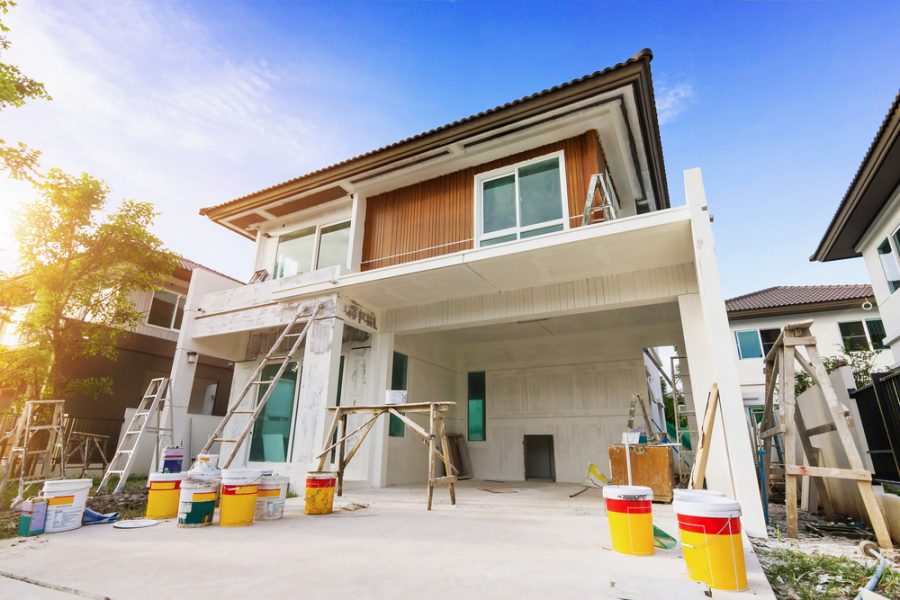If you’re looking for a way to update your home, consider the importance of using the right paint for your exterior walls. When you choose the wrong color, it can have an impact on the look of your home for a long time. If you are painting exterior walls for the first time, you should choose the best color for your home, and you’ll be able to make an informed decision when shopping for paint.
Glossy Finish
Glossy finish paints are a good option for home exteriors. They are durable, water-resistant, and easy to clean. This type of paint also provides a rich, shiny look. But there are better choices for hiding surface imperfections. So it’s important to choose the right gloss for your specific application.
Exterior paint comes in various sheens, and homeowners must determine which sheen will be the best for their project. The type of sheen you choose depends on your desired look and the type of material you are painting.
The high gloss sheen highlights trim, architectural details, and other areas. It also provides the highest level of reflection. Often, it is used in high-traffic areas, such as on exterior doors, window sills, and trim. Using high gloss paint in these locations can make your home stand out in a crowd.
Compared to semi-gloss and flat finishes, glossy finishes are easier to clean and are more durable. However, it’s important to apply the finish evenly. Also, it’s important to find high-quality paint that will allow the application lines to disappear.
High gloss paints also give your home a beautiful shine. A professional painter can complement the color of your trim with a high gloss finish. Consider applying a high gloss finish to your door frames for an elegant look.
Semi-Gloss Finish
If you want to get your home’s exterior walls painted, you may have questions about which paint finish to choose. Although there are several options, the two main ones are gloss and satin.
Gloss is considered the most durable. It is often recommended for exteriors. However, it is also harder to clean than the other two finishes. For this reason, it is not suitable for large areas. Also, it can show blemishes faster than the other finishes.
Semi-gloss is much more resistant to moisture and mildew. This makes it a good choice for areas that are exposed to harsh weather conditions. In addition, it is easier to clean than other finishes. The glossy finish allows the light to reflect more. So, this is a great way to do it if you want to brighten a dark room.
Satin is a less expensive alternative to semi-gloss. You can find it in traditional oil-based paints, modern latex paints, and even special low-VOC ones. Moreover, satin is more forgiving. Using a high-gloss sheen will make highlighting trim and architectural details much easier. Besides, the sheen will also increase the amount of light that reflects off your walls.
In short, satin or a semi-gloss is an excellent choice for indoor and outdoor spaces.
Flat Finish
Choosing the right type of paint for exterior walls is important. Fortunately, there are several options available. It would help if you chose the sheen and finish that best suits your home and lifestyle. It’s also important to understand that your choice will affect your budget.
A high-gloss paint finish will cost more than a flat finish. Glossier paints offer a durable surface and allow more light to bounce around your room. However, they also show more imperfections. Flat finishes, on the other hand, hide these imperfections.
The right finish for your exterior walls depends on the texture of your walls. Flat finishes are better for rooms that get minimal traffic. Satin and eggshell are great choices.
The sheen of the paint also significantly impacts the look of your room. Glossier finishes allow more light to shine through the wall, whereas matte finishes are better for hiding the nuances of the texture. This means that the sheen you choose for your exterior walls should be based on what you intend to use the paint for.
Whether you are painting the interior or the exterior of your home, choosing the right finish can greatly improve the longevity and appearance of your walls. Before you purchase any paint, be sure to test the sheen on a sample of the paint. Also, consider the amount of foot traffic you have in your home.
Longevity
Many factors affect the longevity of exterior paint. Some of them include the type of surface, the paint, and the weather. In temperate areas, exterior paint can last between 5 and 10 years. However, in areas with humid climates and intense storms, the paint can age much faster.
For maximum longevity, it is important to ensure that your paint job is properly cured. If not, it will peel or blister quickly. This will expose your house to the elements and cause structural damage. It is also advisable to seal cracks and dents to prevent moisture ingress.
Generally, paint jobs on aluminum and vinyl siding will last between five and ten years. However, some other types of siding, such as stucco, can last up to twelve years.
The amount of prep work required for your paint job is another factor that will affect the lifespan of your paint. Brick, stucco, and wood siding all require different levels of preparation. Wood is prone to water damage, while brick and stucco are more stable. Also, a quality primer and paint can extend the lifespan of your paint job.

